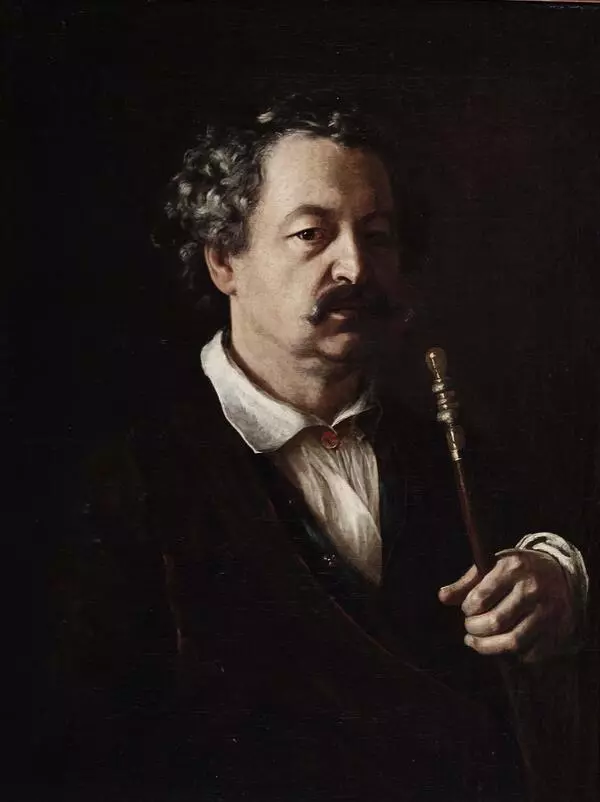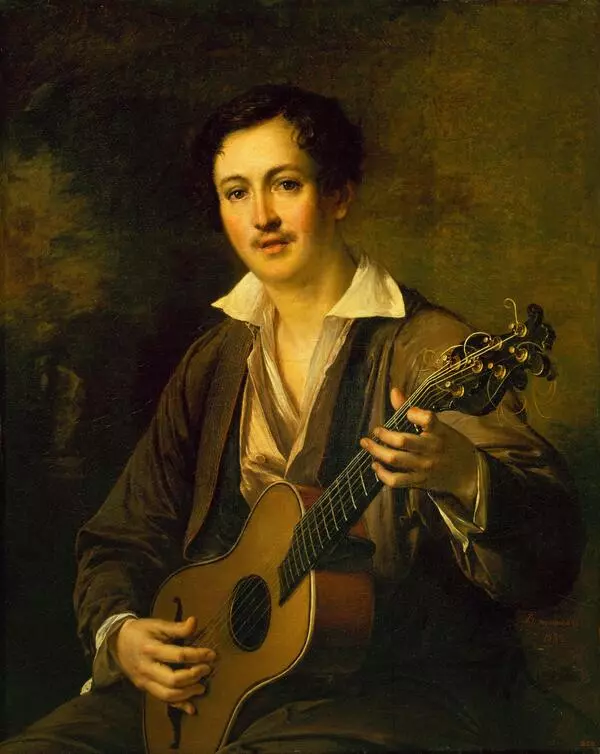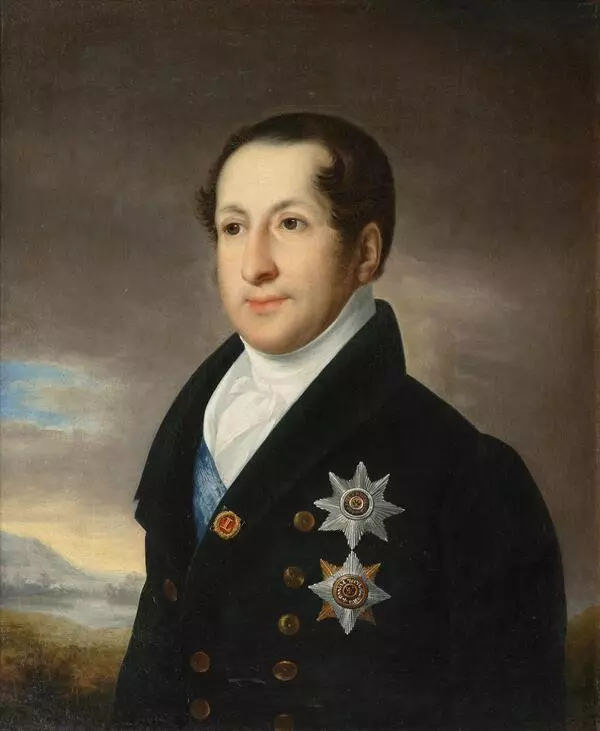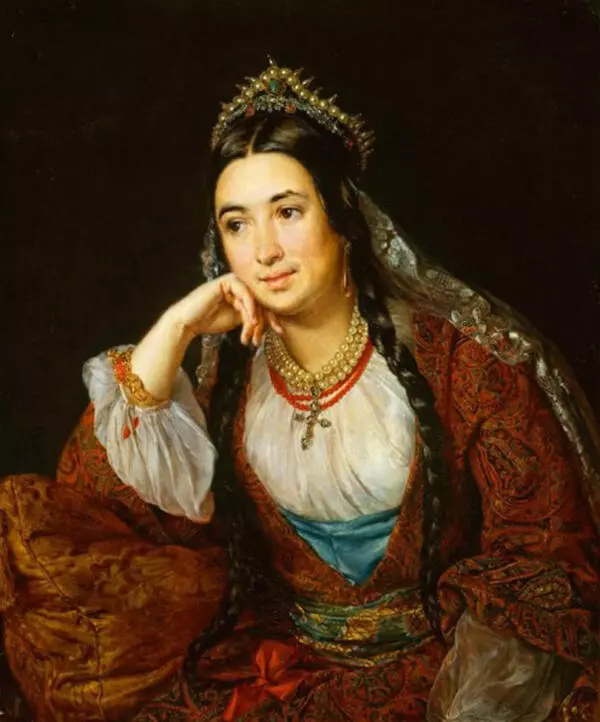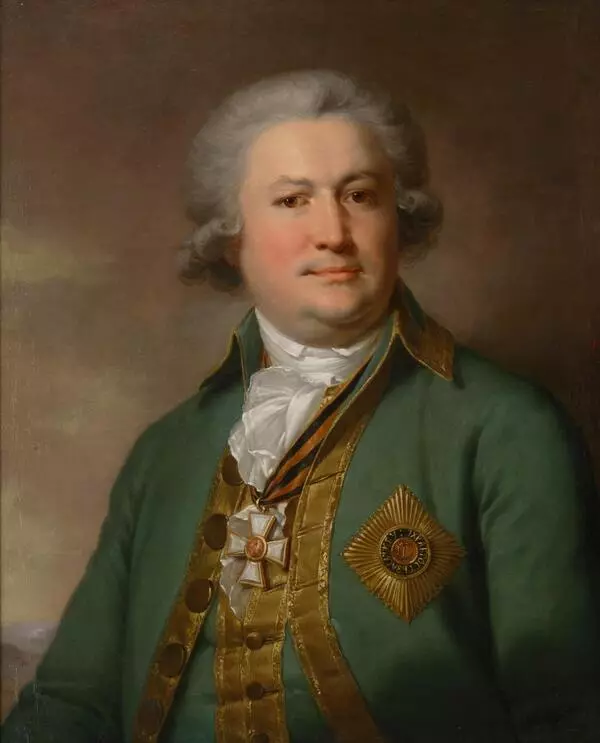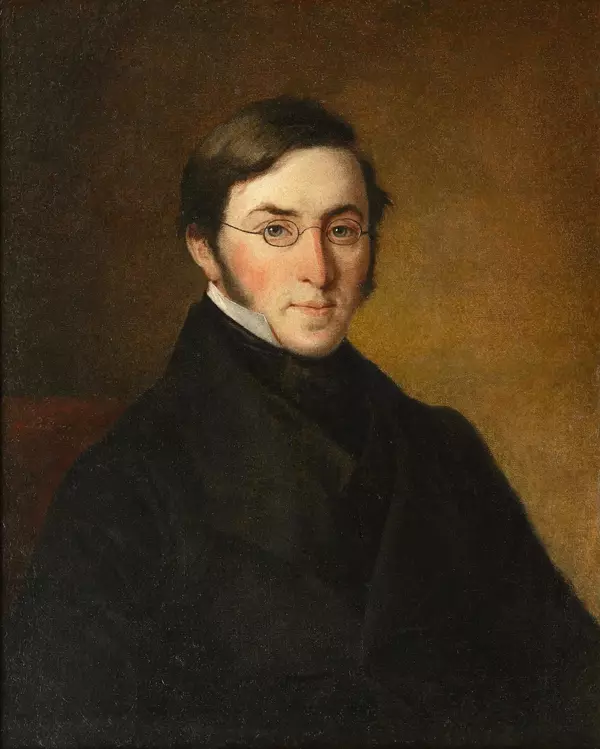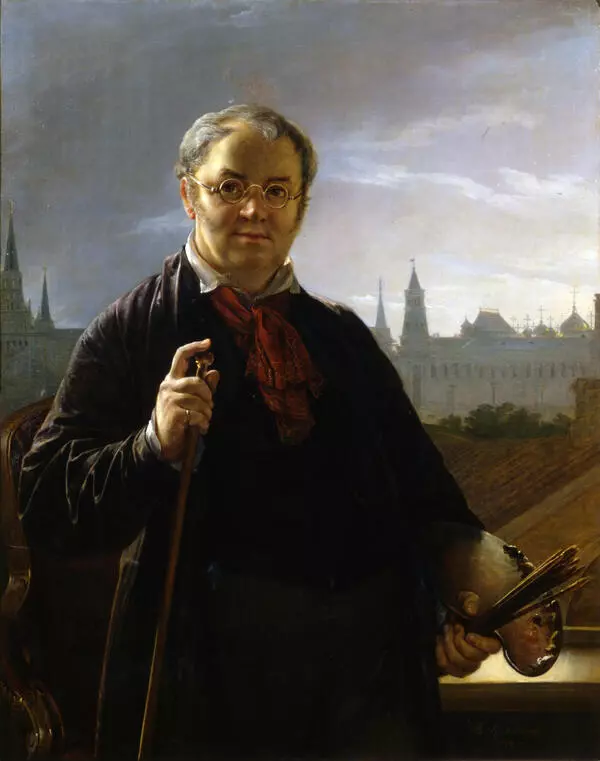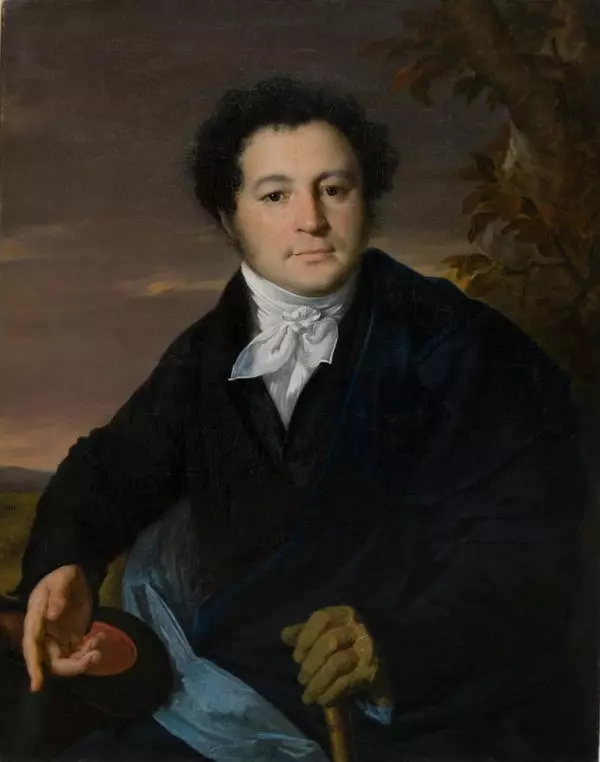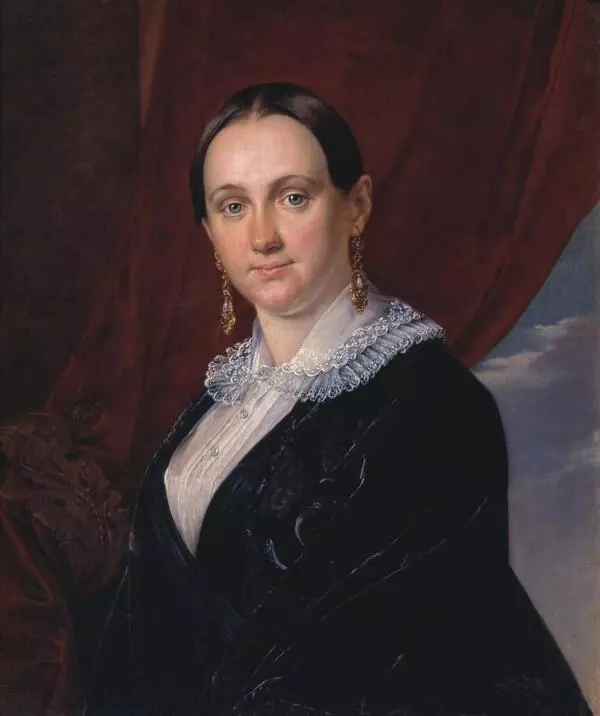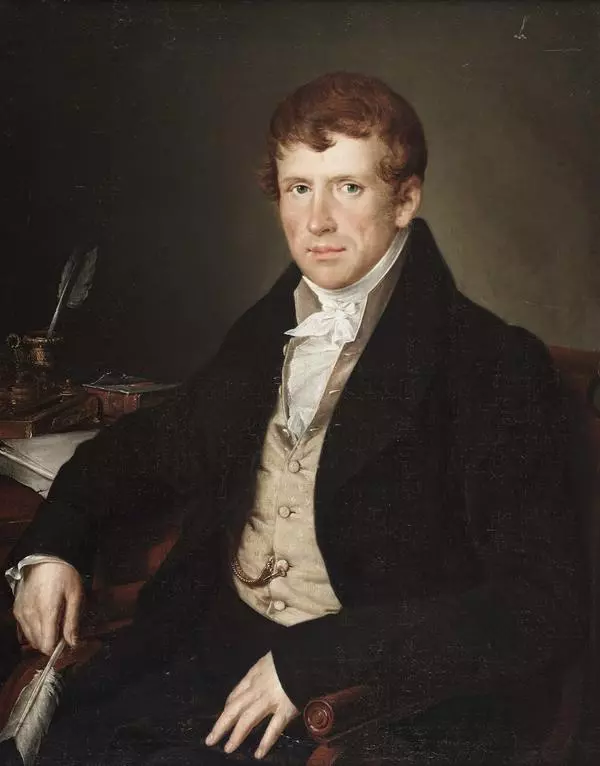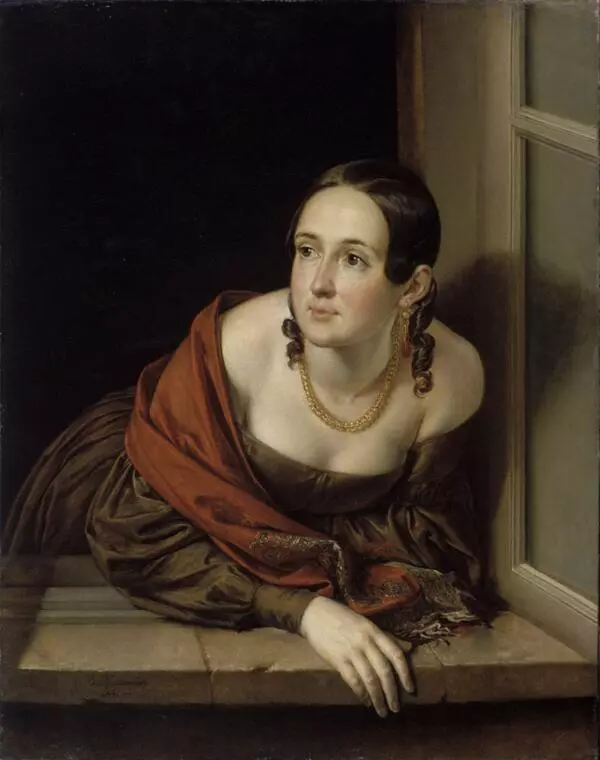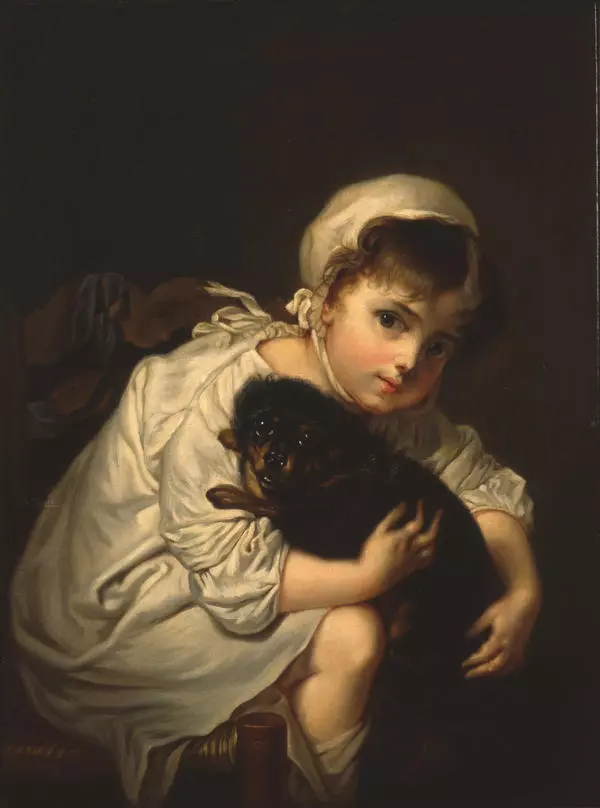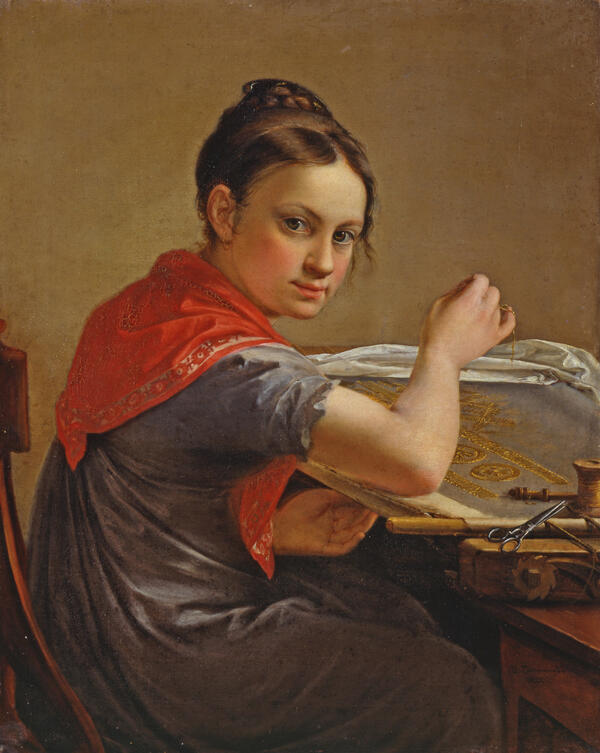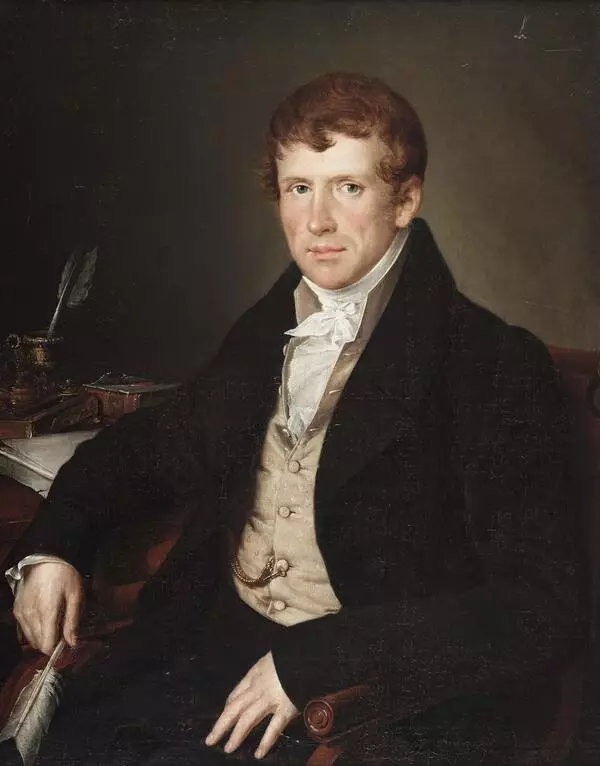Speaking of the portrait art of the first half of the 19th century, one should not forget about the creative work of Vasily Andreevich Tropinin, who was born in 1776. The former peasant serf who received freedom at the age of 45 managed to become an Academician of Art and the most famous artist of the metropolitan school of portrait painting of his time. His talent won wide recognition and glory.
The portrait of V.D. Voyeykova painted by Tropinin in 1853 is one of his most distinctive works. The viewer sees a type of female beauty. It echoes romantic traditions but is distinguished by its internal chasteness and self-restraint. We see Vasily Tropinin’s inherent attention to detail, the meticulously captured textures of objects: fabric, lacework, earrings, etc. But the most importance thing is that he managed to convey the model’s emotional state.
Varvara Dmitrievna Voyeykova, whose dates of birth and death remain unknown, came from the famous Voyeykov family that was close to the Russian court. Members of the family distinguished themselves in the 1812 Patriotic War and greatly contributed to the development of stud farms in Russia. Varvara was the daughter of Dmitry Petrovich Voyeykov, the brother of the most prominent stud farm owner of the 19th century Vasily Petrovich Voyeykov. It was exactly Vasily Voyeykov who portioned his beloved niece a then unheard-of fortune: a stud farm in the Tambov Governorate.
Vasily Tropinin made acquaintance with Varvara Voyeykova when she was married to Ilya Ladyzhensky, a retired Captain of the Horse Guard Regiment. The painter was overwhelmed by the woman’s beauty and modesty. From the time of their first meeting, she was an embodiment of beauty and charm for him. In the portrait, the painter captured her shy half-smile, calm and clear glance full of dignity.
Angela Kachurina, a scholar of the Voyeykov family, compared Varvara Voyeykova with La Gioconda, focusing on her distinguished self-command, gentleness of soul and enchantment. The woman in the portrait is looking at the viewer gently and frankly, immediately causing reciprocal affection in the viewer’s soul.
Somewhat ‘homely’, simple and apprehensible lineaments that we see in the picture are characteristic of portraits by Vasily Tropinin. It is his special manner that helped the painter to make it into history of painting as one of the founders of the Russian school of realistic portrait. Tropinin’s style to a large extent defined the specifics of the whole school of portrait art for the following several decades.
The portrait of V.D. Voyeykova painted by Tropinin in 1853 is one of his most distinctive works. The viewer sees a type of female beauty. It echoes romantic traditions but is distinguished by its internal chasteness and self-restraint. We see Vasily Tropinin’s inherent attention to detail, the meticulously captured textures of objects: fabric, lacework, earrings, etc. But the most importance thing is that he managed to convey the model’s emotional state.
Varvara Dmitrievna Voyeykova, whose dates of birth and death remain unknown, came from the famous Voyeykov family that was close to the Russian court. Members of the family distinguished themselves in the 1812 Patriotic War and greatly contributed to the development of stud farms in Russia. Varvara was the daughter of Dmitry Petrovich Voyeykov, the brother of the most prominent stud farm owner of the 19th century Vasily Petrovich Voyeykov. It was exactly Vasily Voyeykov who portioned his beloved niece a then unheard-of fortune: a stud farm in the Tambov Governorate.
Vasily Tropinin made acquaintance with Varvara Voyeykova when she was married to Ilya Ladyzhensky, a retired Captain of the Horse Guard Regiment. The painter was overwhelmed by the woman’s beauty and modesty. From the time of their first meeting, she was an embodiment of beauty and charm for him. In the portrait, the painter captured her shy half-smile, calm and clear glance full of dignity.
Angela Kachurina, a scholar of the Voyeykov family, compared Varvara Voyeykova with La Gioconda, focusing on her distinguished self-command, gentleness of soul and enchantment. The woman in the portrait is looking at the viewer gently and frankly, immediately causing reciprocal affection in the viewer’s soul.
Somewhat ‘homely’, simple and apprehensible lineaments that we see in the picture are characteristic of portraits by Vasily Tropinin. It is his special manner that helped the painter to make it into history of painting as one of the founders of the Russian school of realistic portrait. Tropinin’s style to a large extent defined the specifics of the whole school of portrait art for the following several decades.




